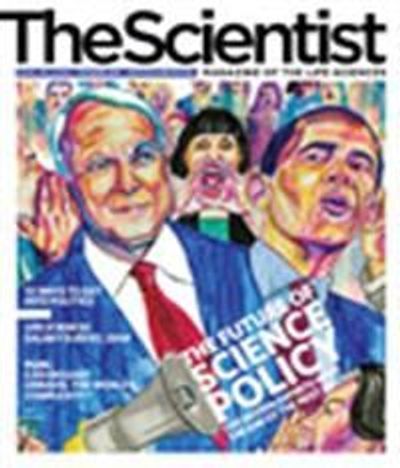
Over a career that spans more than half a century, John Holland, a professor of psychology, electrical engineering, and computer science, invented genetic algorithms, or computer code inspired by evolutionary biology. A MacArthur fellowship recipient, Holland is "really not quite sure" how he became interested in biology, but says he remembers being hooked by "the notion of combining mathematics and biology" while reading R. A. Fisher's Genetical Theory of Natural Selection. On page 36, Holland describes the application of genetic algorithms to the field of complex adaptive systems, such as the immune system. Next February, Holland will celebrate his 80th birthday in style - at a conference in his honor hosted by Nanyang Technological University in Singapore.

Alexander Grimwade, a 30-year veteran of science and medical publishing, has worked for various companies across Europe and the United States, including Elsevier and Nature, and was publisher at The Scientist...

Robert Pacifici built a career in the thick of drug development at pharmaceutical giants Eli Lilly and Amgen, as well as a private biotech company, Xencor. In 2004, Pacifici became Chief Scientific Officer at CHDI, Inc., a foundation devoted to drug discovery and development for Huntington's disease. On page 28, Pacifici and co-author David Rankin discuss the benefits and challenges of virtual biotechs as enterprises to fast-track development of therapies for rare diseases. "The only thing that stands between us and success is the science," says Pacifici.

Portland illustrator Jordan Domont traces his artistic origins to drawing comic book characters as a kid. Encouraged by his stepbrother to pursue art, Domont completed a BFA in painting at the University of Oregon, and today the 27-year-old illustrates for magazines such as Business Week and Atlanta Magazine. Domont's medium of choice is colored ink on mylar, a plastic sheet material that doesn't absorb ink, so it can be layered, but not always controlled. "It's really unpredictable," he says. "I never really know what these paintings are going to look like until they're finished." Domont created the image that graces this month's cover, as well as portraits of four people who shape science policy from behind the scenes (p. 30).
Interested in reading more?
